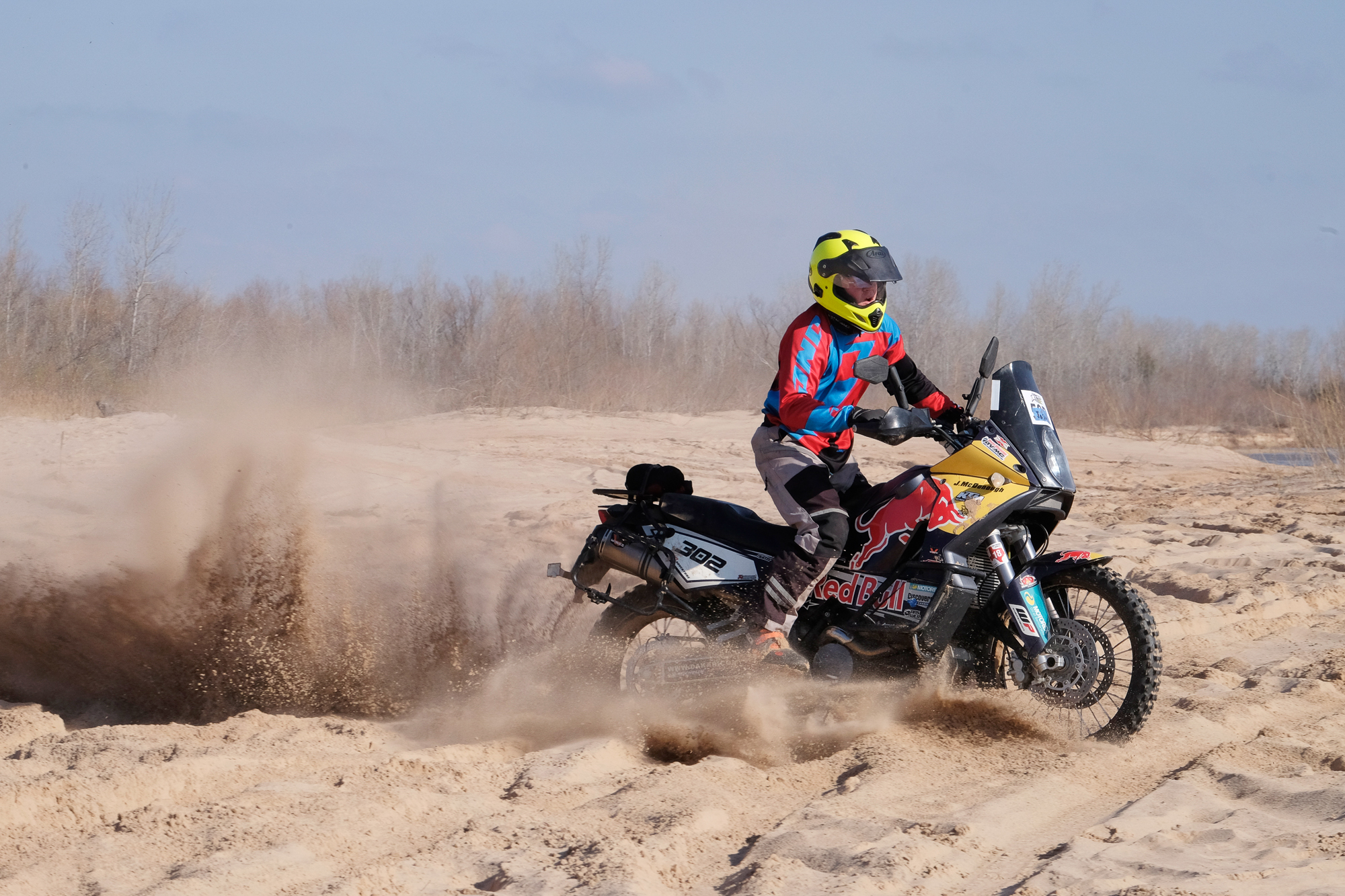Editor’s Note: This article was originally published in Overland Journal’s Spring 2022 Issue.
Photography by Susan Dragoo
Few motorsports employ such a diverse array of skills as adventure riding. Adventure riders are those enviable souls who ride big-bore motorcycles, some approaching 600 pounds before adding luggage, over terrain befitting a world traveler lost in the wilderness. Fitness, agility, and navigational skills are certainly helpful in dealing with the speed, technical terrain, mud, rocks, sand, and mechanical challenges adventure riders often face. But with good judgment, the right attitude, and a will to learn, anyone can join the club.

First, Set a Goal
Why do you want to take a large machine equipped with knobby tires off-pavement in the first place? Is it merely to continue beyond the beaten path? Perhaps you want to join a group of salty buddies for a trip down the Baja peninsula, camping on beaches and dining on fresh-caught fish. Most adventure riders seek to test their skills against both the elements and their fellow riders at some level. Others like to compete in organized events. Whatever the purpose, it is good to have a goal before investing time, energy, and financial resources into what can become a significant commitment.
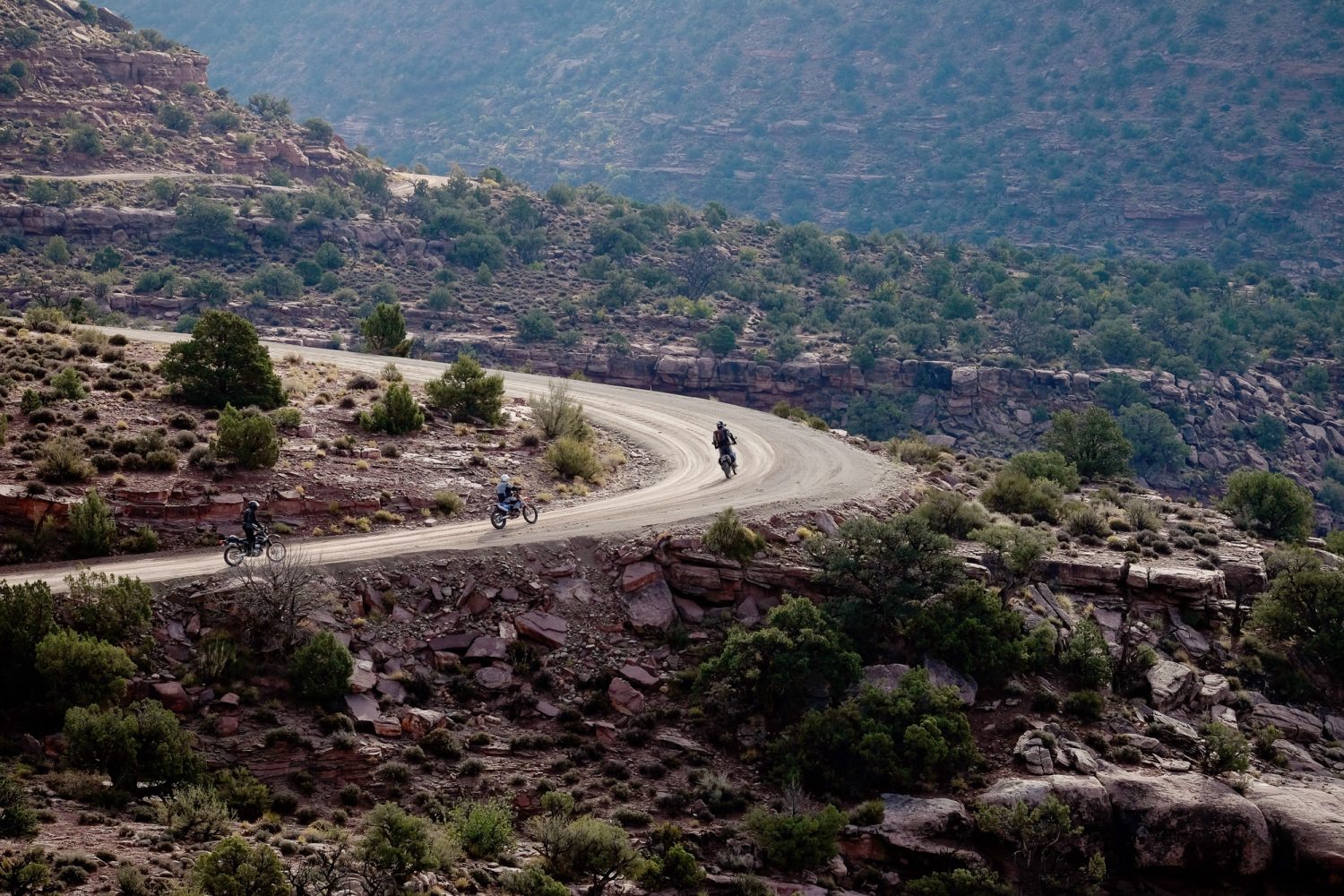
Competition and Camaraderie
As with most activities, there are group gatherings and organized contests worldwide to pit the best of the best against one another. Events like the Wailin Wayne Weekend organized by Chad Warner and held each year in the Wayne National Forest of Ohio are fun ways to meet like-minded friends, camp, train, and join rides through the wooded trails. The Texas Redneck Ramble is a hoot, offering top-notch training and wild and woolly rides through the Lone Star State. Touratech’s DirtDaze, a spin-off of Bill, Gini, and Christian Dutcher’s Americade, was created to accommodate East Coast riders who prefer a little grit in their gravy. AltRider’s Taste of Dakar in the Pacific Northwest offers fast-paced fun for folks who want to push the limits of both themselves and their machines. The GS Giants is one organization that routinely holds rallies with contests to challenge riders, and to entertain those who prefer to watch as skillful and audacious motorcyclists pit themselves against one another. Arguably the pinnacle of these competitions is BMW Motorrad’s GS Trophy. The Trophy is an amateur, world-class event happening every other year since 2008. First occurring in Tunisia, it has since been held in South Africa, South America, Canada, Mongolia, and New Zealand. Albania is the next venue, scheduled for 2022. Men, and since 2016, women, have been selected from countries around the world to make up teams of three. Odd years, each country holds qualifiers from which their champions will be chosen. What superpowers must these otherwise mortal creatures possess to win such an honor? In truth, they are just regular folks who have the will to train hard and set their sights on the stars.
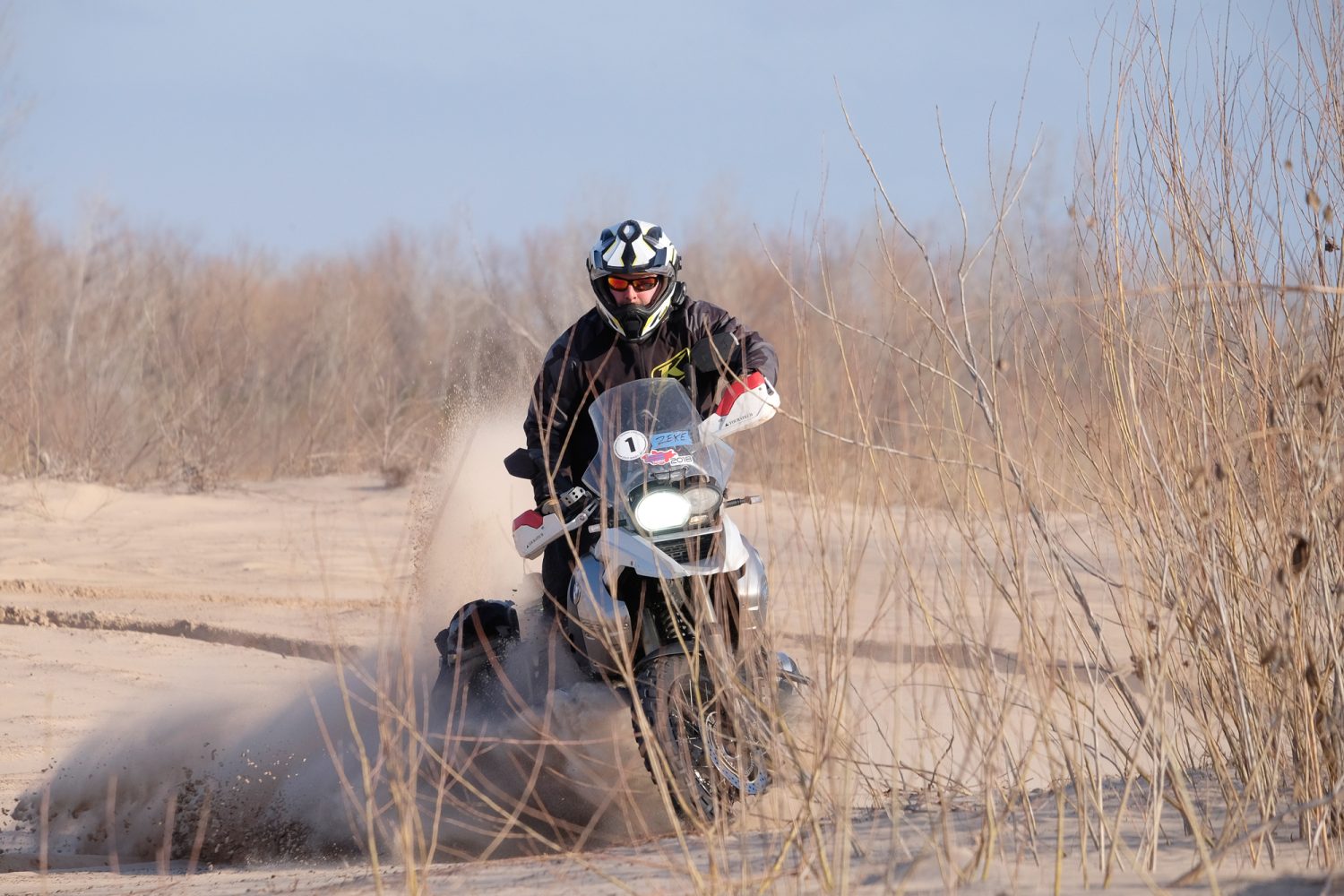
Immersion Tours
If you prefer a tamer approach, numerous tour companies partner with excellent trainers in the US and abroad to host rides from calm to crazy. And, of course, random groups form at the drop of a hat for weekend, week-long, or longer excursions everywhere imaginable. The key ingredient, passion, is available to us all. That common emotion is the tie that binds adventure riders around the globe—the joy of preparing for a challenge at any level is something we can all appreciate. Any way you package it, once you set out to become an adventure rider, life is never dull.
Establish a Benchmark
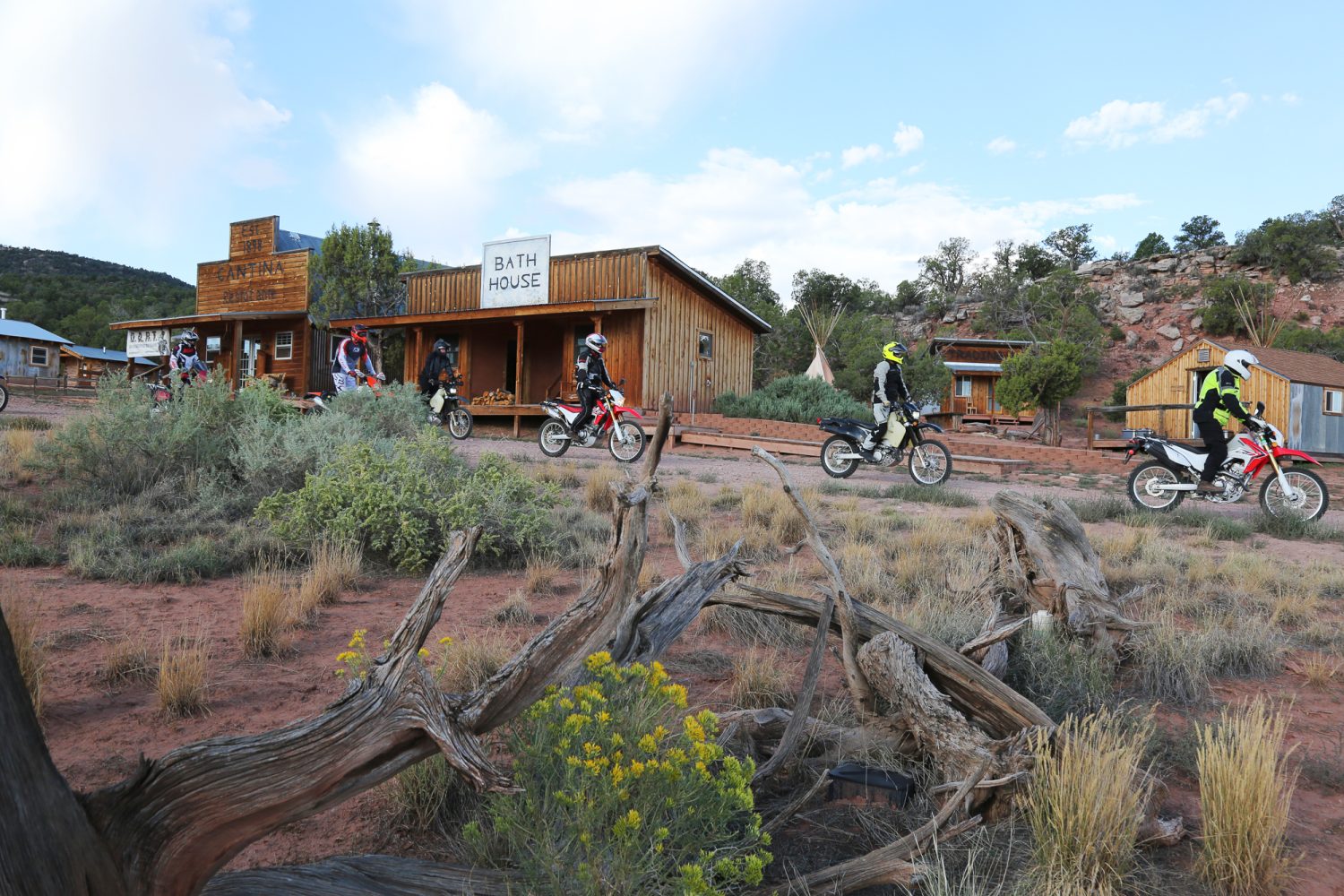
After you have decided how you want to use an adventure bike, consider evaluating yourself. Well-known motorcycle instructor Bret Tkacs has developed an adventure rider rating system that offers standardized skill measurements on multiple levels of terrain. This system is fully explained on Expedition Portal (expeditionportal.com/how-good-are-you-really/) and can be accessed at brettkacs.com/adv-skill-rating-system/. Take the time to become familiar with the system, then rate yourself to form a baseline before commencing training or joining a tour.
Taming the Beast
Are these bikes too big for me? What if I can’t reach the ground? Relax. It’s the size of the fight in the dog that matters most.
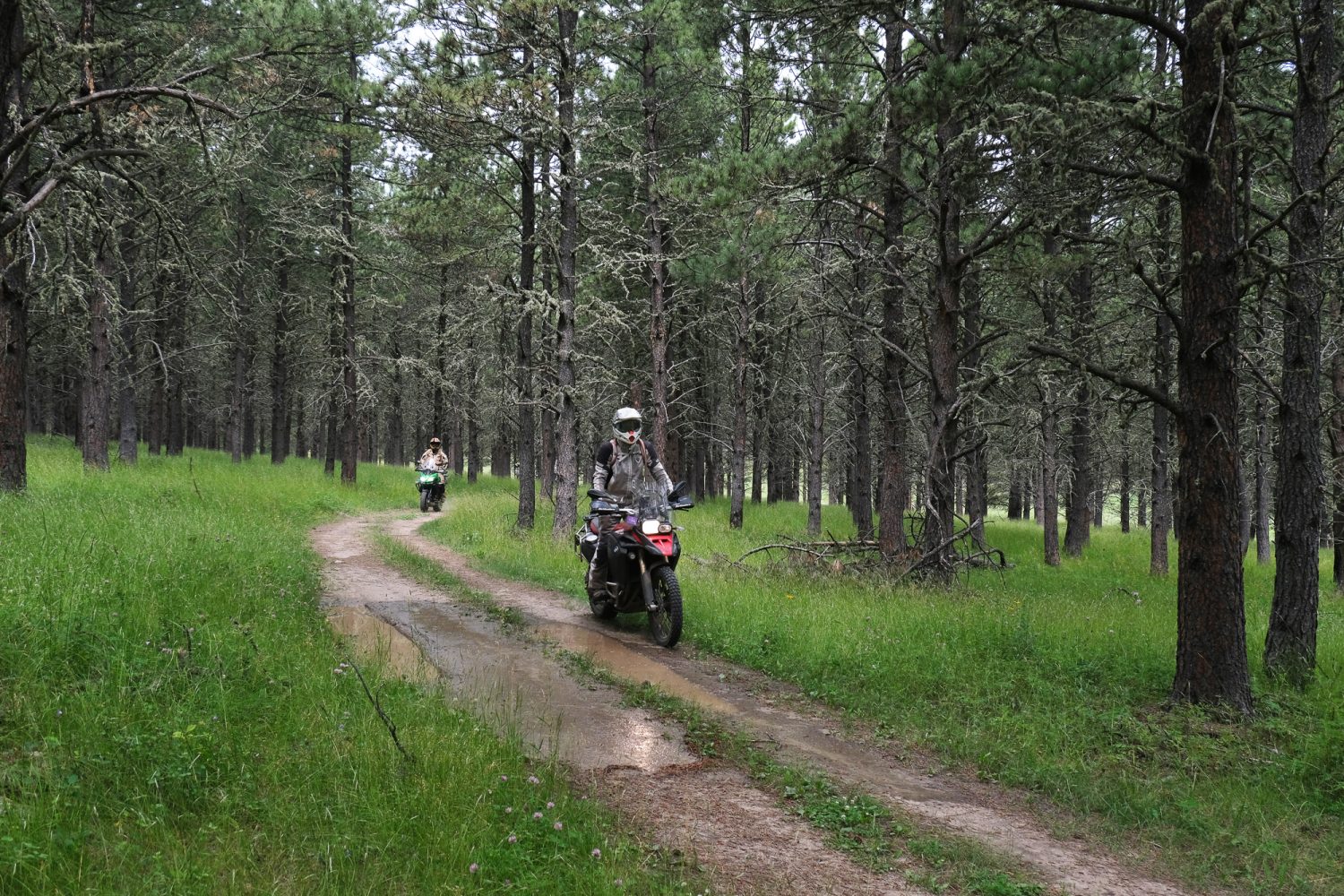
There is something about successfully coaxing a big-bore behemoth through tough terrain that thrills the soul, regardless of age or gender. In the old days, it was guys more than gals who typically took the lion’s share of two-wheeled tumbles. They rode their BMX bikes over jumps made of cinder blocks and plywood. Knees were skinned, chins were stitched, and more than a few teeth were lost in the making of those memories while sisters, moms, and girlfriends cheered them on. These days, the so-called “fairer sex” is gaining ground—equally as passionate as their scruffy counterparts at traveling beyond the beaten path. Whatever the motivation, competition or exotic tour, male or female, the desire to improve your skills can be enhanced by training.
How Do I Get Started?
Selecting a machine is one of the first steps. Motorcycle choices are based upon several factors. What’s your budget? How far will you travel, and over what sort of terrain? How skilled are you at handling a motorcycle on the street? Are you willing to risk falling? These considerations will help form your choice.
The Internet is rife with forums specific to any brand of machine or type of riding. Advrider.com is a great source of information regarding bikes, gear, mechanical tips, places to ride, and people to ride with. Join up and make yourself known.
Just Buy Gas
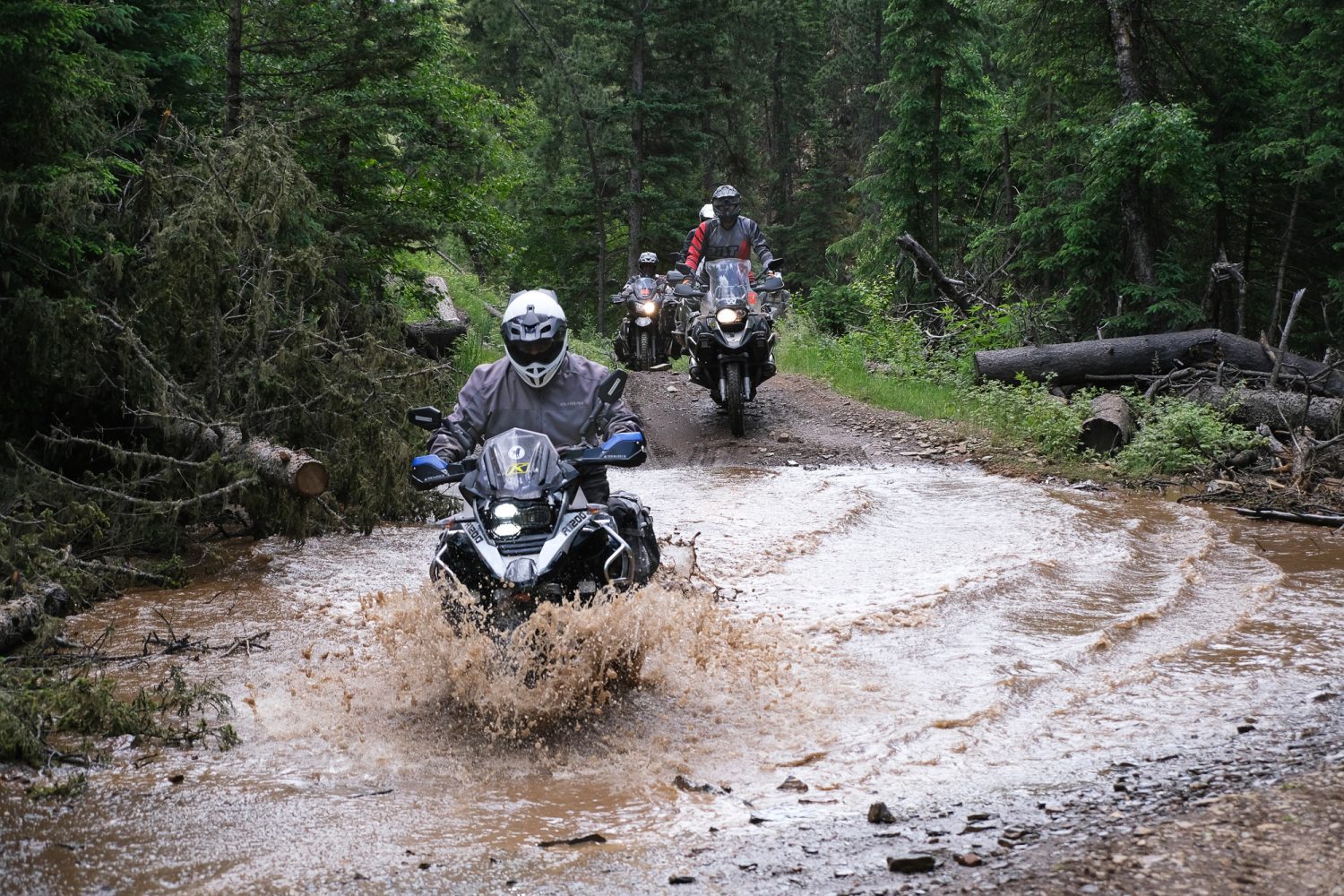
“We don’t rise to the level of our expectations, we fall to the level of our training.” – Ancient Greek Poet Archilochus
It has been said that simply going out to ride is the only investment necessary to improve riding skills. Sure, seat time can help you become more familiar with your machine, but practicing your mistakes makes you better at making them. We are fortunate to have a host of good training centers across the US and beyond. Those that adhere to sound principles of big bike handling can save a bundle in busted plastic and plaster of Paris. They also turbocharge your development as a skilled adventure rider. An average rider will learn more in a few days of training than in a lifetime of trial and error.

What Skills Do I Need First?
Nothing takes the place of a qualified instructor observing your every move and correcting errors as you go, but that doesn’t mean you can’t learn a lot on your own or with a group of fellow riders. If training isn’t in the budget or convenient at the time, you can still improve by focusing on proven riding techniques. There are a number of drills you can practice at home. Routinely seeking new ones can help you become familiar with how the bike handles in situations and positions you may never think to try when you go out for a ride. Braking, body position, balance, clutch, and brake and throttle drills can be successfully practiced with a little creativity, hard work, and a few cones or tin cans. Standing on the footpegs improves your steering, suspension, and sight distance. Although it isn’t required every mile you ride, make standing your default while practicing. Here are three drills to get you started.
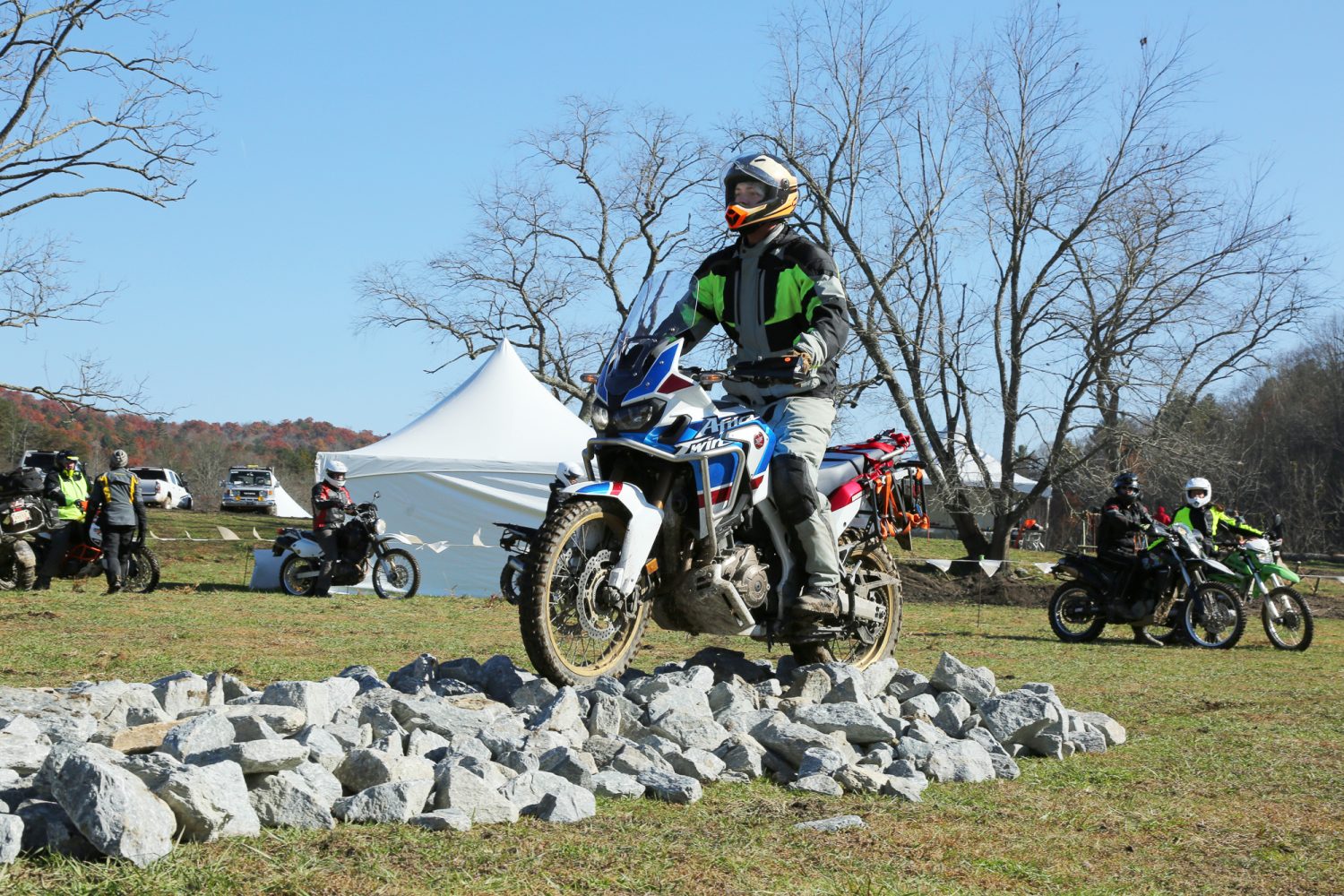
Braking
Effectively slowing and stopping a motorcycle is the most important skill a rider can possess. Braking well, on or off the pavement, requires practice, but a few myths about the use of brakes on a motorcycle must first be overcome: Don’t touch that front brake, or it will pitch you over the handlebars, and If you use the front brake on gravel, it will throw you on the ground. In actuality, the front brake holds most of our stopping power in nearly every situation, but it must be used with respect and finesse.
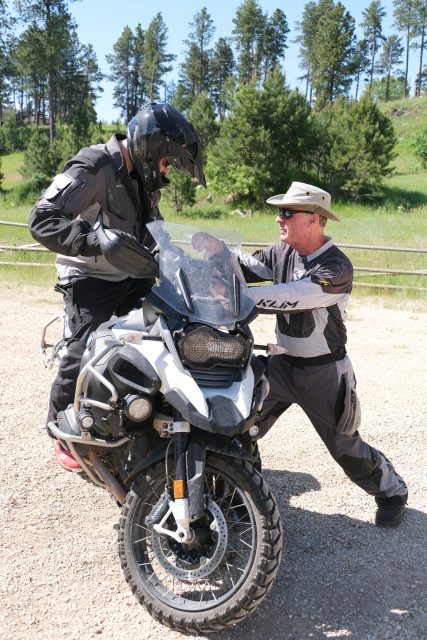
ABS On or Off?
Modern adventure bikes are equipped with some incredible ride modes affecting throttle response, traction control, suspension, and braking. Entire articles could be dedicated to their use, benefits, and limitations. To know exactly how your machine will perform while braking, turn off the ABS. Use caution, as over-braking could result in a fall until you are familiar with how the bike will react.
An off-pavement braking practice session should begin by leaning forward and accelerating to 20-25 mph while standing on the pegs.
At a predetermined point, squeeze your knees against the motorcycle, close the throttle, pull in the clutch, and press the brake pedal, firmly locking the rear wheel. Move your weight back as far as possible while braking. Limiting factors to movement will include ankle articulation relative to pedal position, baggage, length of arms or legs, and fear of moving on the bike.
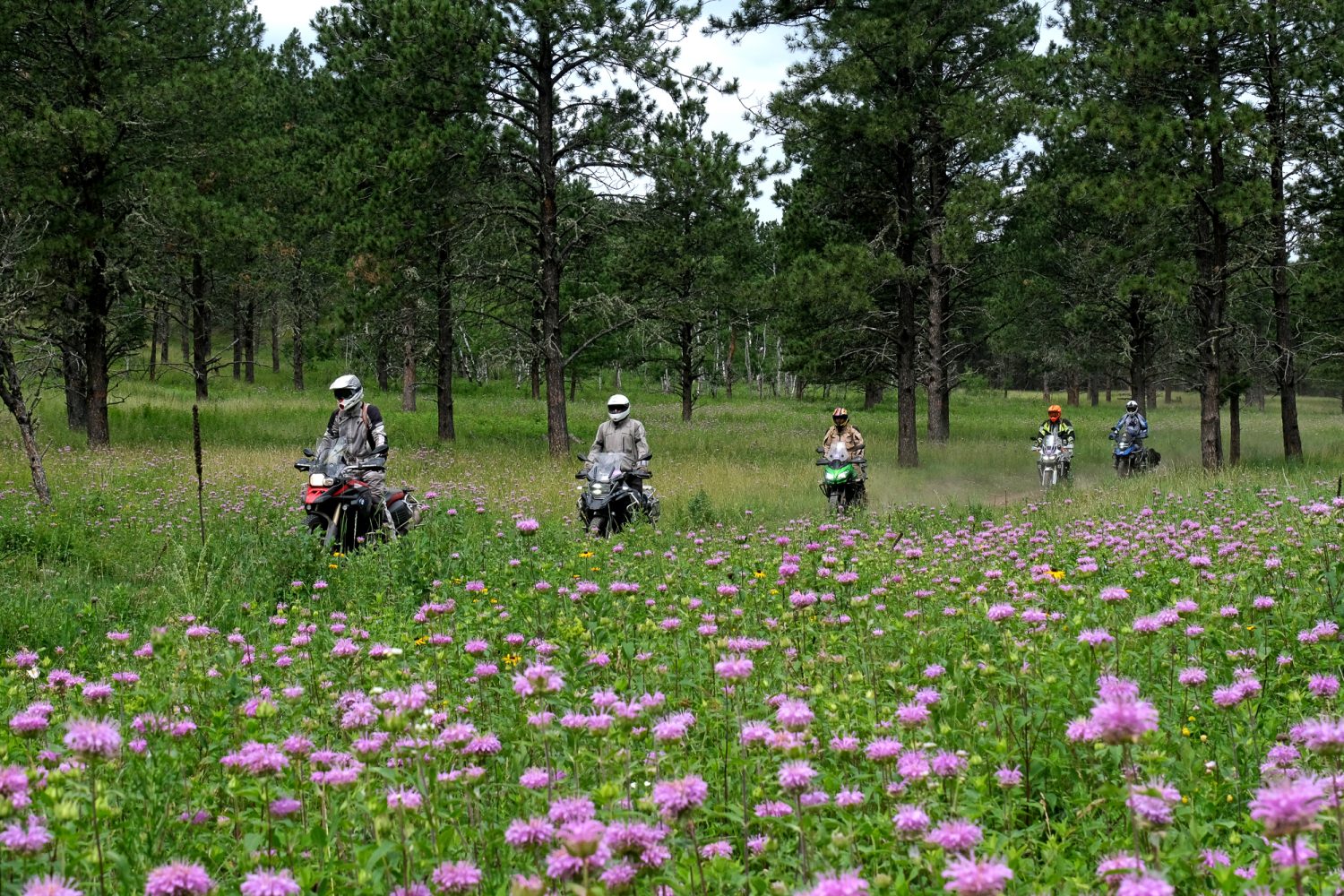
Keep your eyes forward throughout the stop. Practice this until the fear of skidding the rear wheel is gone. Do not release the rear brake until fully stopped. Remember to downshift if you shifted up while accelerating.

After a few runs, begin to add the front brake. Using your index and middle finger, pretend you are progressively squeezing a wet sponge, trying to fill a glass without spilling. Keep the ring finger and pinky wrapped around the throttle. The more you squeeze, the more the front tire presses into the surface, and braking becomes more effective. Start with a light brake application, then add pressure as your confidence grows. If the front tire begins to slide, quickly release and reapply the brake more slowly. The point where the tire is about to slide is called “threshold braking,” the bike’s maximum ability to scrub speed without the tire skidding.
When skidding the rear tire, sometimes the bike will slew sideways a bit, especially if the surface is irregular or your weight is unevenly distributed to the footpegs. This is seldom a problem, but releasing the brake could induce a high-side fall, so don’t. Keep knees tight against the bike, eyes forward, and stay calm.
If you grab the front brake or squeeze it too hard, the front wheel could tuck, causing a fall. Start slowly and work up to a smooth, progressive transition.
Mark braking distances and revel in just how short you can stop once you have practiced.
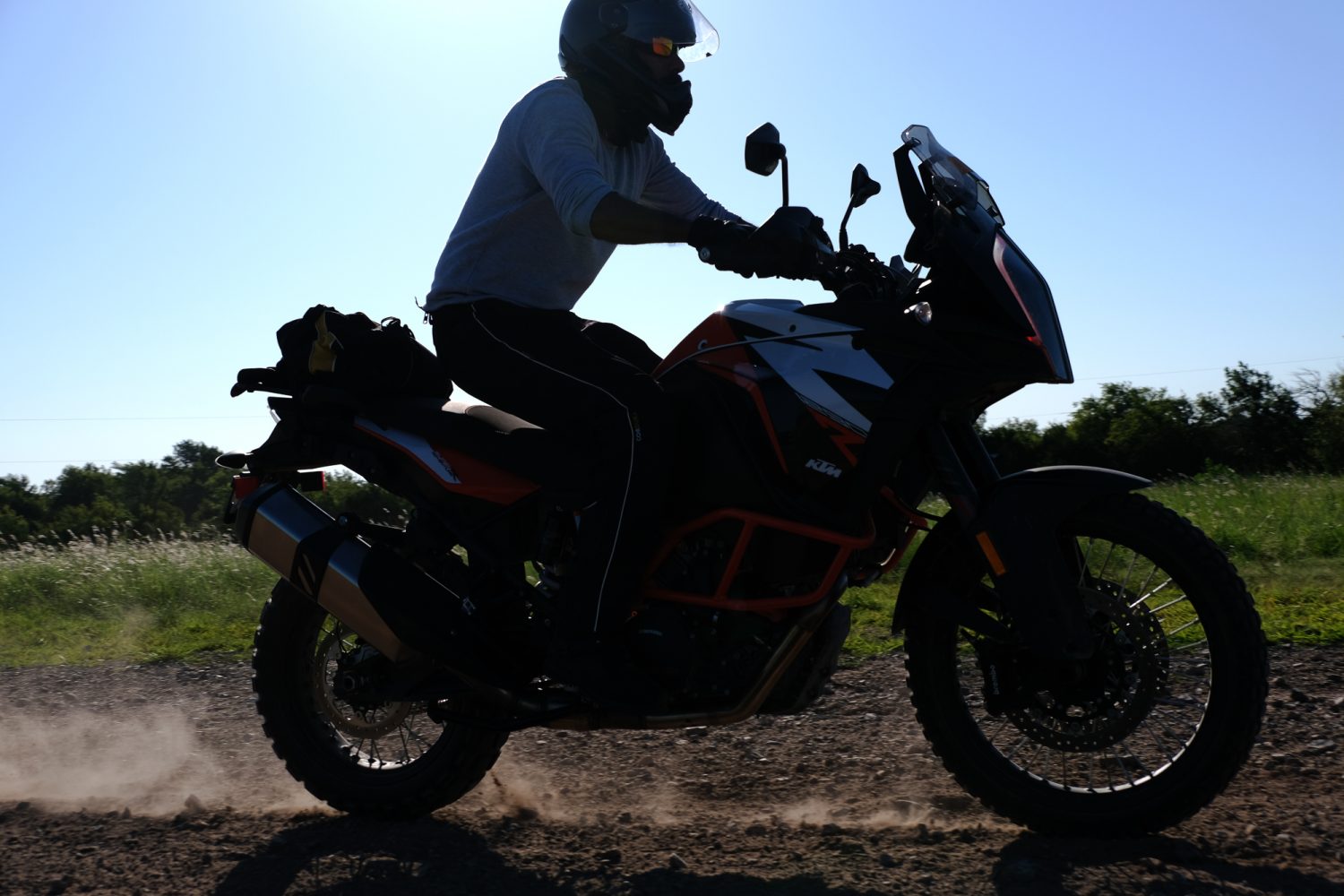
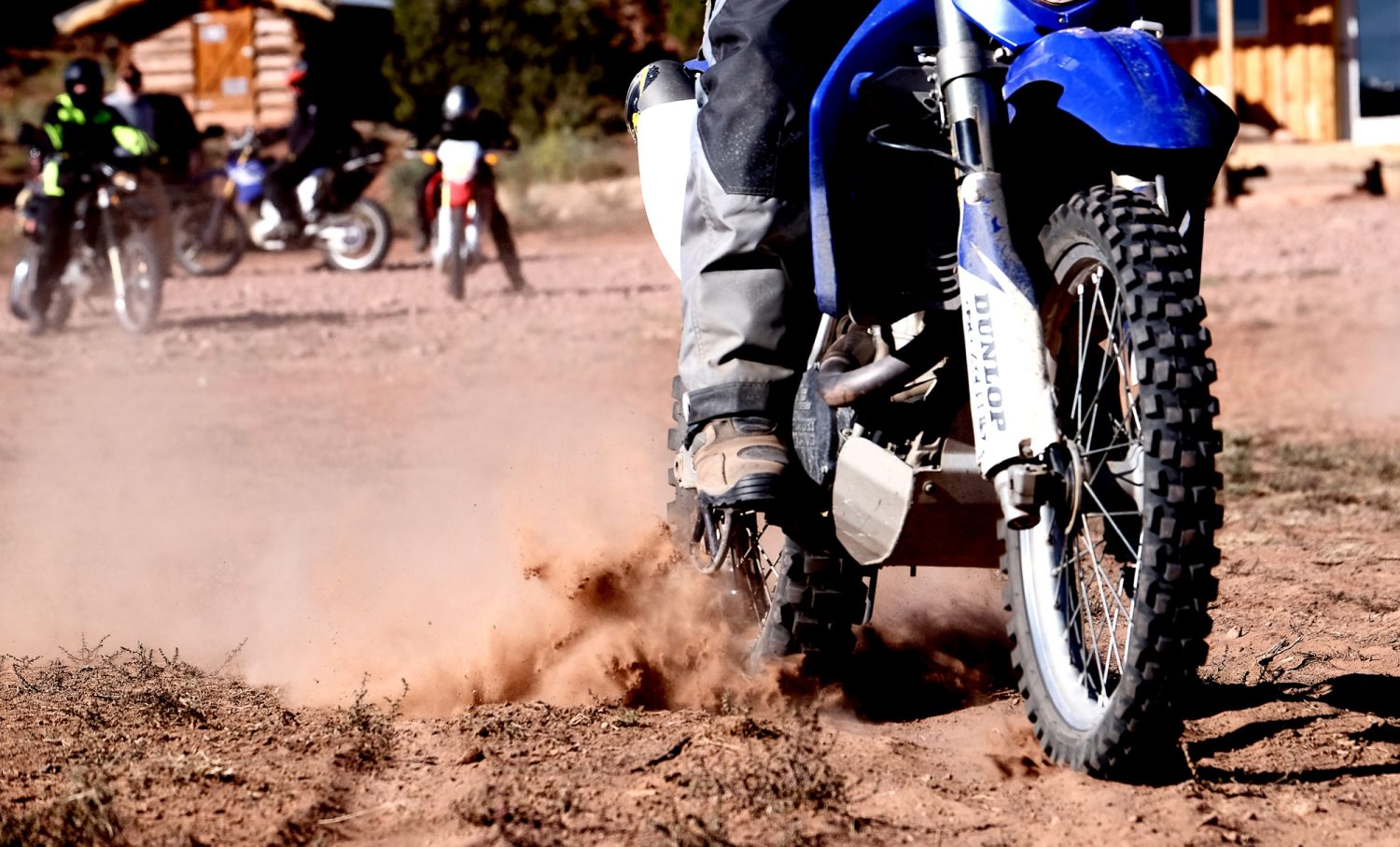
Note: Once you have mastered braking off-pavement, it is not necessary that you always skid the rear wheel.
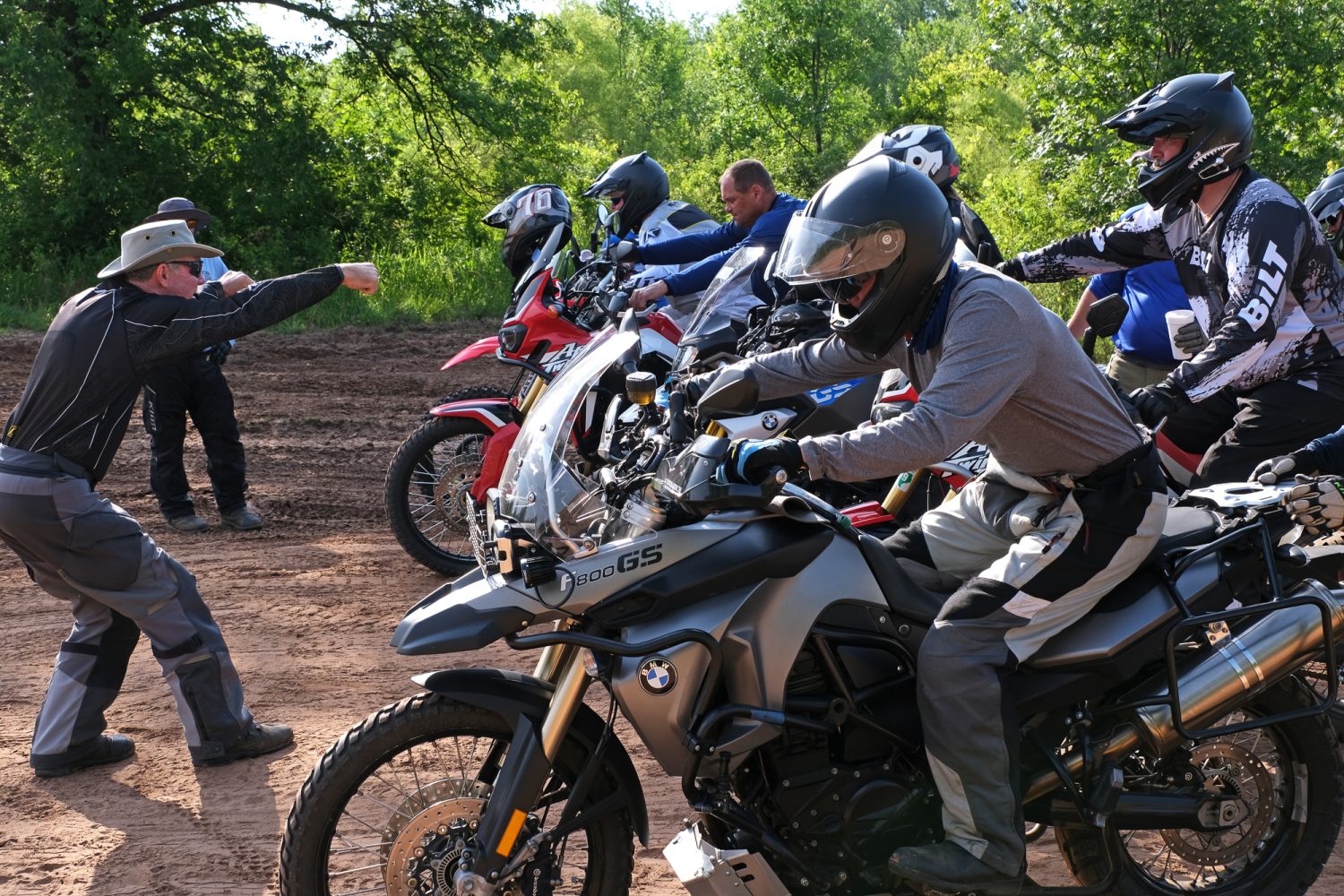
Counterbalanced Turns
Turning a large motorcycle in a tight space can be challenging, especially in a low-traction environment. Some riders resist assuming the proper counterbalanced position. Early in life, we learned to catch ourselves by taking a step to regain balance. When done on a motorcycle, this is called a dab. Unfortunately, this act of personal preservation pulls you to the inside of the turn, exacerbating the off-balance feeling by adding your weight to an already off-balance motorcycle. If you lean a bike without sufficient speed to keep it upright using centrifugal force, you might dab or fall. If you go too fast, your tires may slip, causing a fall. To prevent this, use pressure on the outside footpeg and correct body position to counter the motorcycle’s weight.
If properly positioned, you cannot easily reach the ground. Think of your body as ballast, like the big counterweight hanging opposite the boom of a crane. You are committed to the turn. The good news is that when entering a turn properly balanced, i.e., counterbalanced, all forces generated by the motorcycle/rider combination are perpendicular to the ground. In this instance, traction is not compromised by lateral forces.

When you begin, first look in the direction you intend to turn. Next, weight the inside footpeg to initiate the turn and turn the handlebars in the same direction. Your chest should follow, and your shoulders will remain parallel with the handlebars. Your body, particularly your butt, will counter the lean by moving to the outside of the turn as you transfer weight to the outside footpeg. It’s a smooth motion, like a dance. Lift your elbows slightly and press your outer knee into the tank or seat, and you’re good to go. If necessary, twist your feet on the pegs in the direction of the turn. From there, weight the footpegs according to the need to remain balanced and maintain a stable platform. Dragging the rear brake against the clutch/throttle (putting the bike “in tension”) can also aid stability. The result is a balanced combination. You can now turn tighter than ever, regardless of terrain or traction.
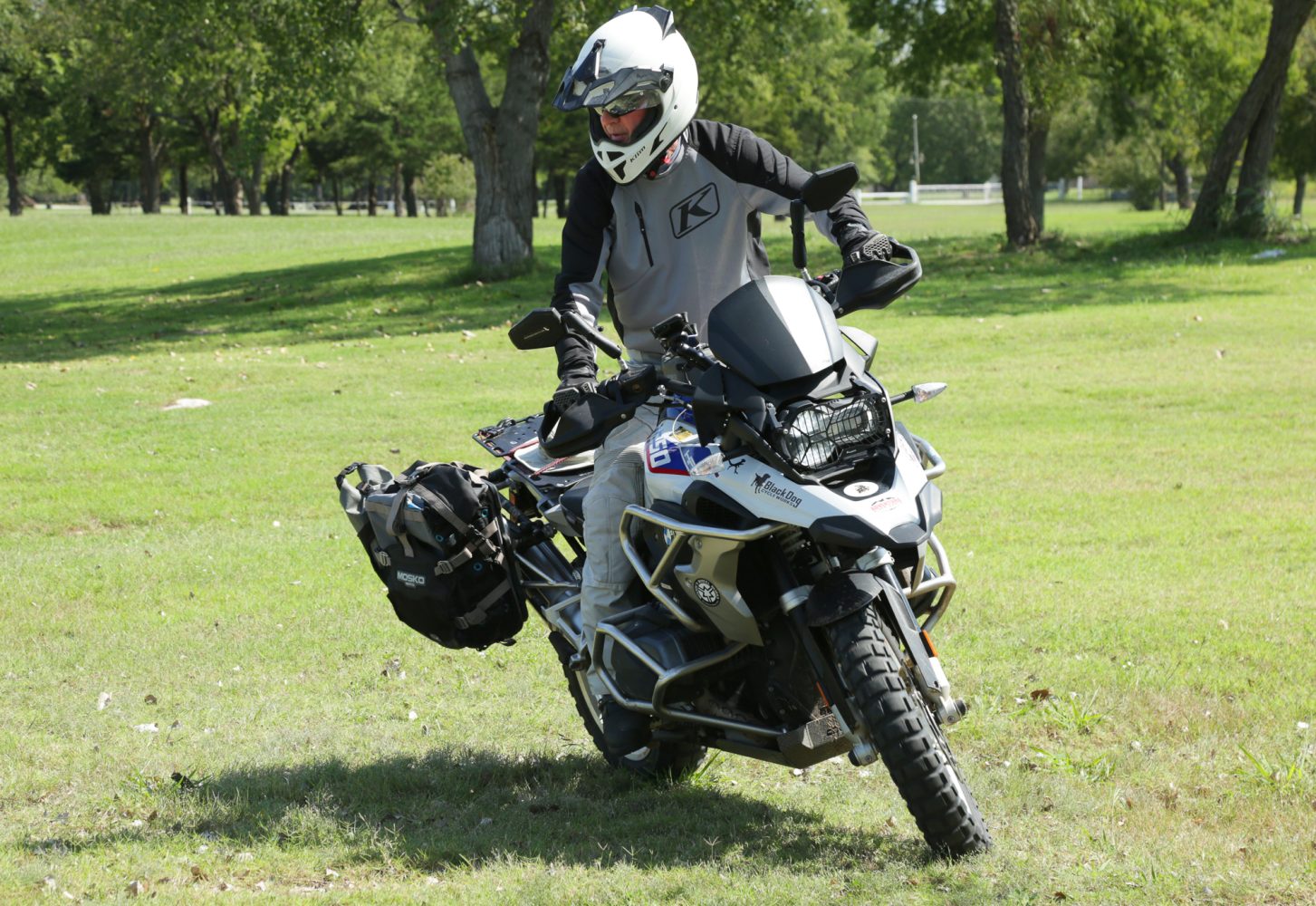
The Tap and Go (aka the Strategic Dab)
A strategic dab is a well-placed foot, intended to prevent losing one’s balance, even before it’s needed.
It happens that heavy adventure bikes are usually also tall. This combination of characteristics is, by necessity, to aid in ground clearance and suspension travel. Unfortunately, seat height becomes a limiting factor for many who would otherwise love to enter the world of two-wheeled off-pavement exploration. Dispelling the myth that the bike is too tall is part of any good off-road training program.
I will preface this discussion by acknowledging it is easier for a new rider to ride a short bike. That said, skill trumps inseam every time. The rider can adapt their skills to fit the bike’s height rather than the other way around. Adjusting the bike usually involves lowering the suspension, impairing the bike’s handling characteristics and ground clearance on- and off-road. Exercises that help students learn include one of my favorites, the Tap and Go. This exercise is perfect for riders of all sizes and skill levels but is particularly beneficial for those challenged by tall seat heights.
The Tap and Go setup is simple: it starts with a row of cones or makeshift markers, laid roughly eight paces apart on relatively flat ground. Six or seven cones are plenty. Enter the exercise area to the right of the first cone, far enough away to allow a counterclockwise, symmetrical circle centered around the cone. At the nine o’clock position, lower your left foot to the ground, keeping the motorcycle in balance by pushing it upright as you step down. Push enough that you don’t have to hold the bike using muscle, only balance. This can be done even by a rider whose inseam is well below the seat height by simply slipping the butt off to the same side as the foot being lowered.
Briefly touch your foot to the ground, then resume circling the cone counterclockwise. Remember to use a counterbalanced body position from the previous lesson. Make an “S” and proceed by approaching the second cone on your right at the three o’clock position. Continue alternating until you have completed all cones. Return to the start and repeat. Initially, the point is not to come to a complete stop but to just do a tap and go, or strategic dab, as the exercise name implies. Later, as you become more confident in your ability to remain upright, bring the bike to a full stop at each cone.
Your clutch management skills will significantly improve success, so practice riding slowly, slipping the clutch enough to maintain momentum, before attempting the exercise. You can even start by touching alternating feet to the ground as you ride slowly in a straight line before circling the cone. Break it down as much as needed to keep it simple and feel the accomplishment of each exercise segment before attempting it all at once.
Practice only improves your skill when you know what to practice. By following a well-choreographed, prescribed curriculum, you will soon discover that no bike is too tall.
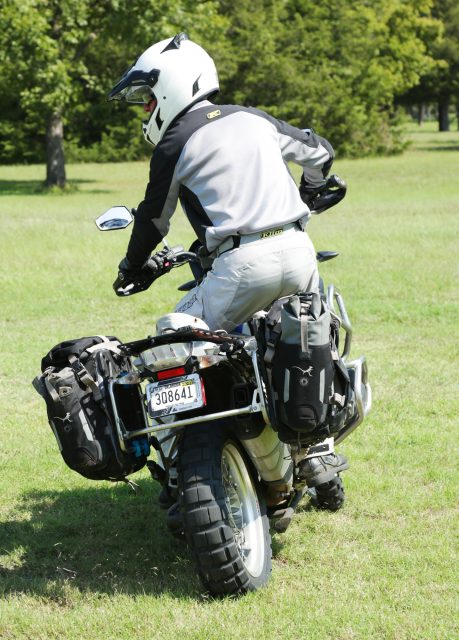
Are You Willing?
Only a small percentage of motorcyclists delve into the world of adventure riding. It isn’t for everyone. But those who are willing to invest in proper equipment and work at improving their skills will discover a new world of opportunity beneath their wheels the moment those wheels leave the pavement.
Our No Compromise Clause: We carefully screen all contributors to ensure they are independent and impartial. We never have and never will accept advertorial, and we do not allow advertising to influence our product or destination reviews.


